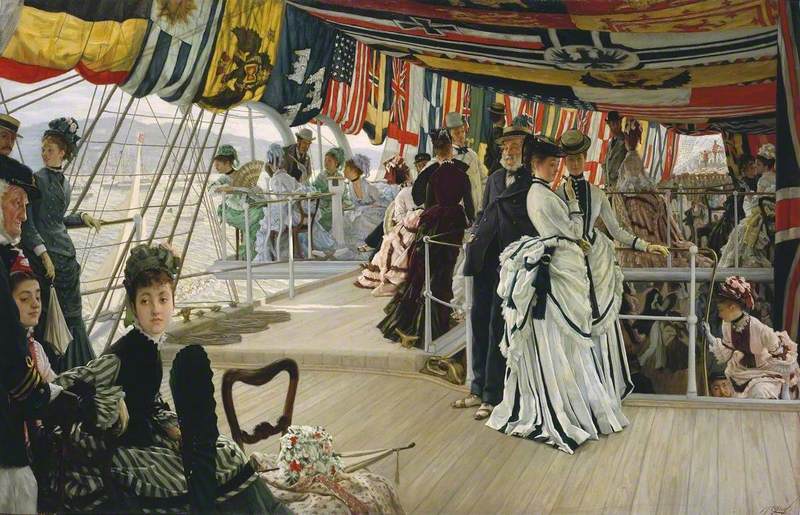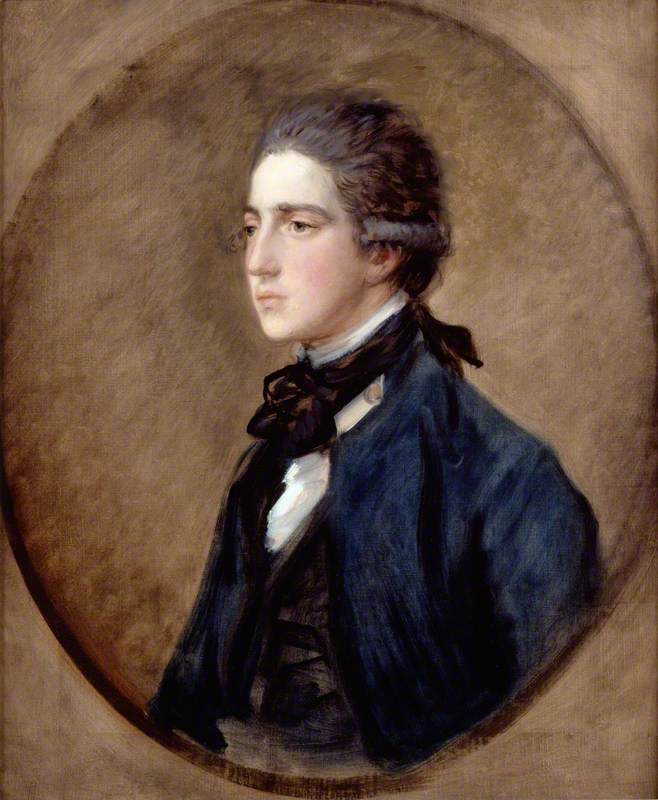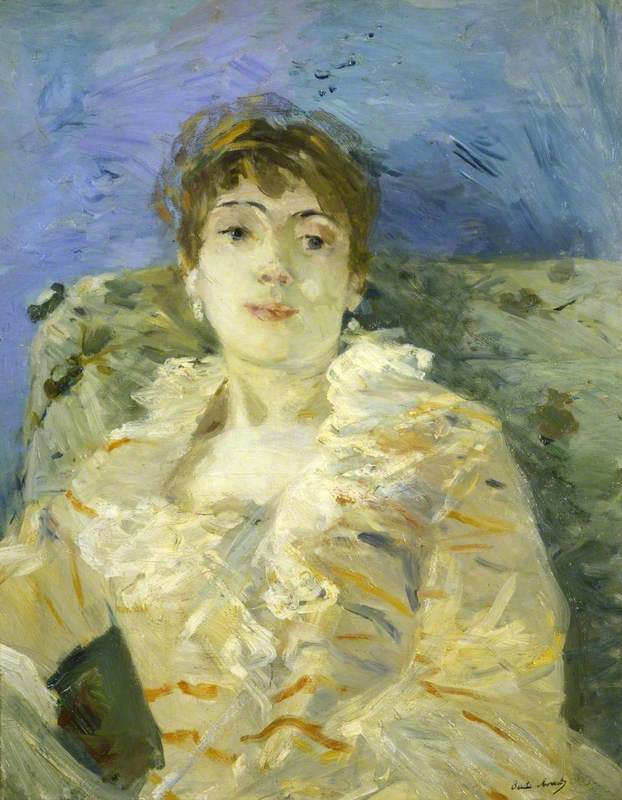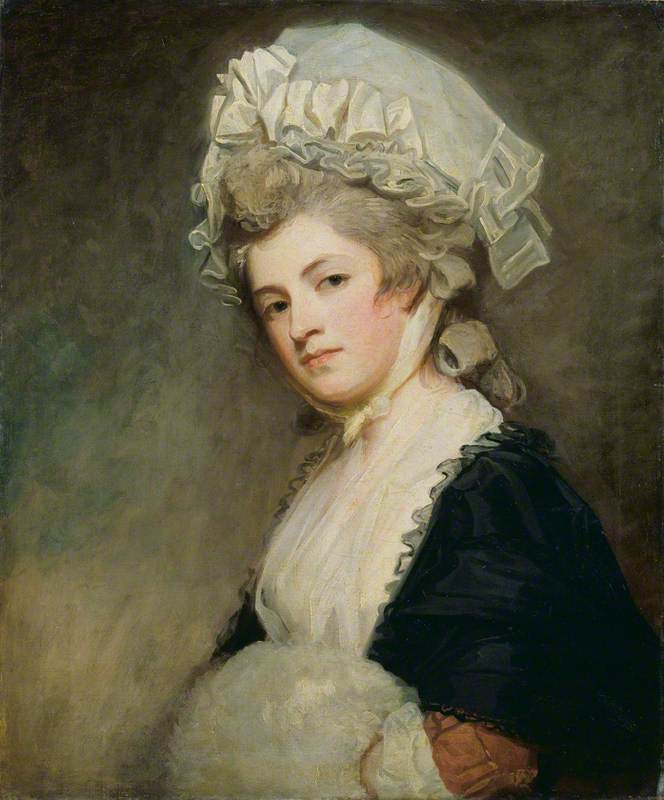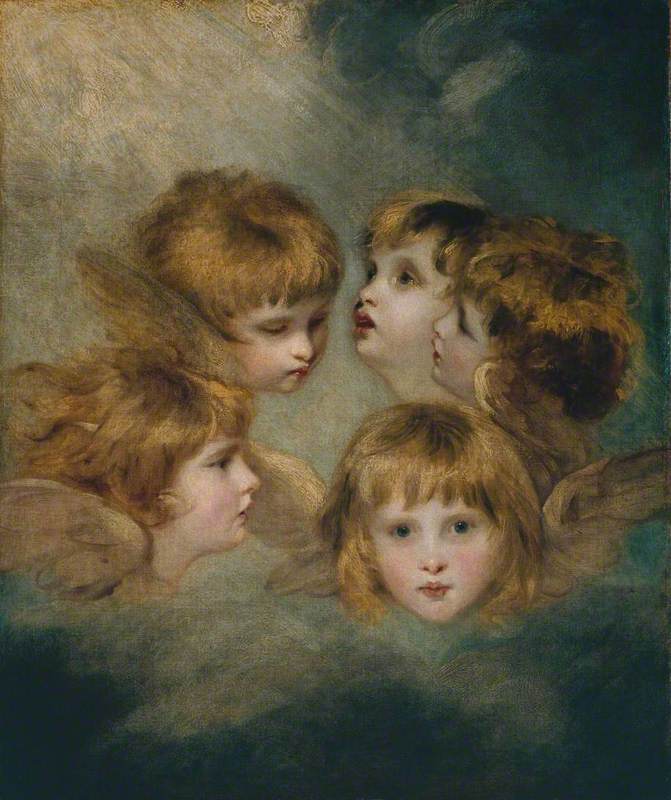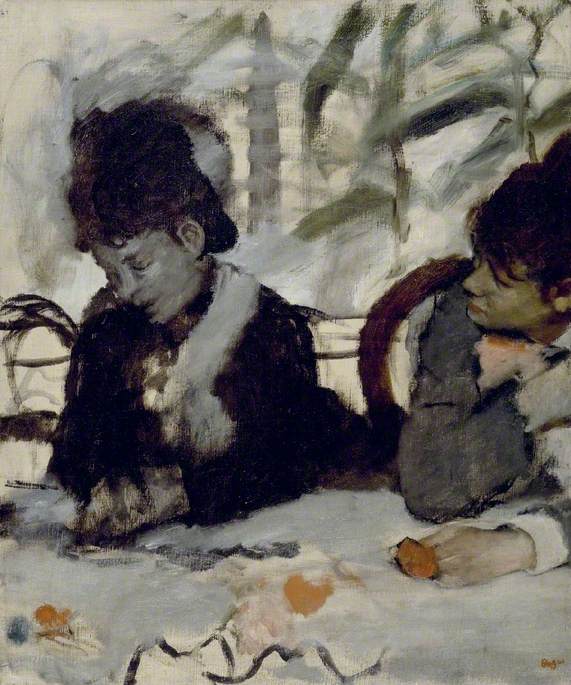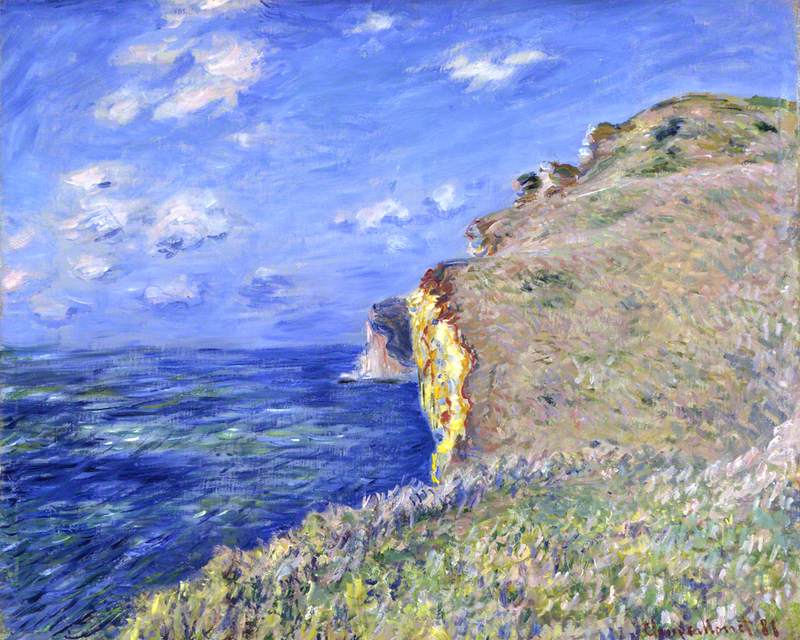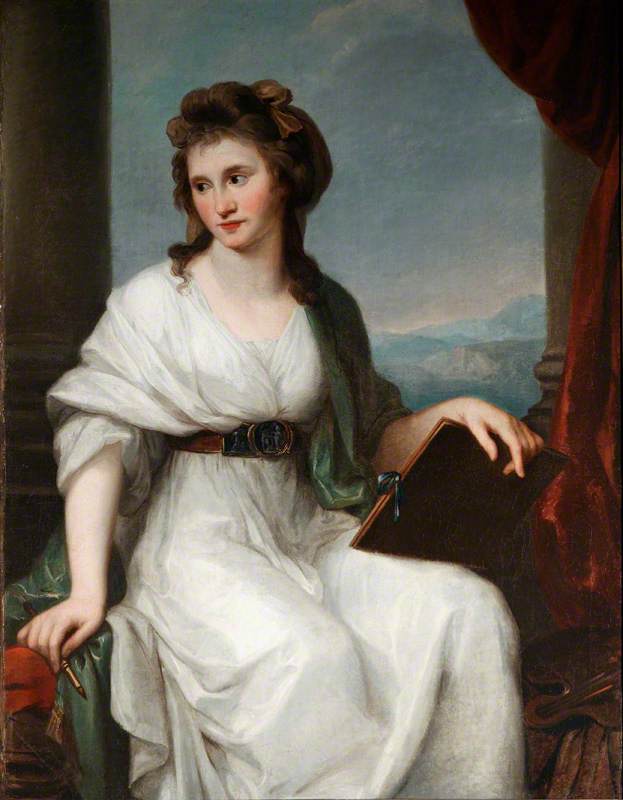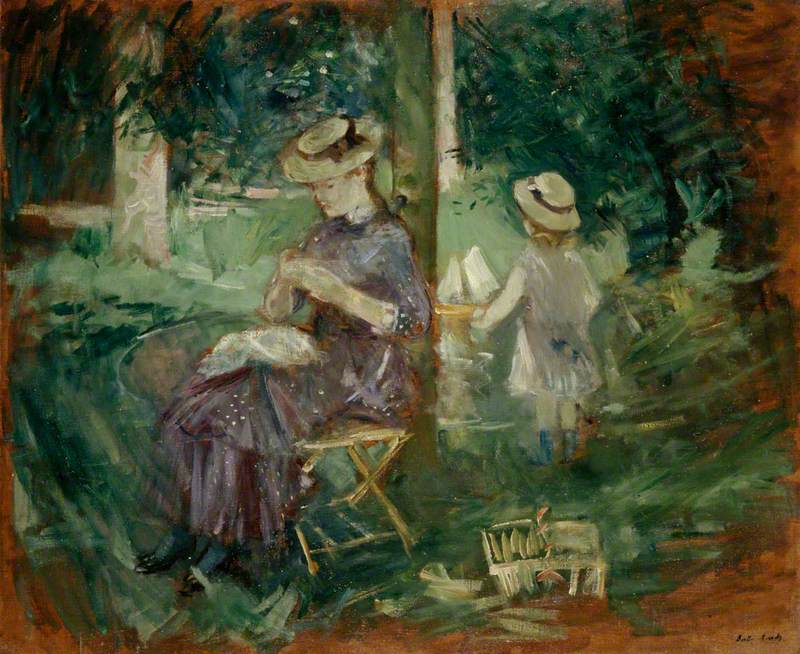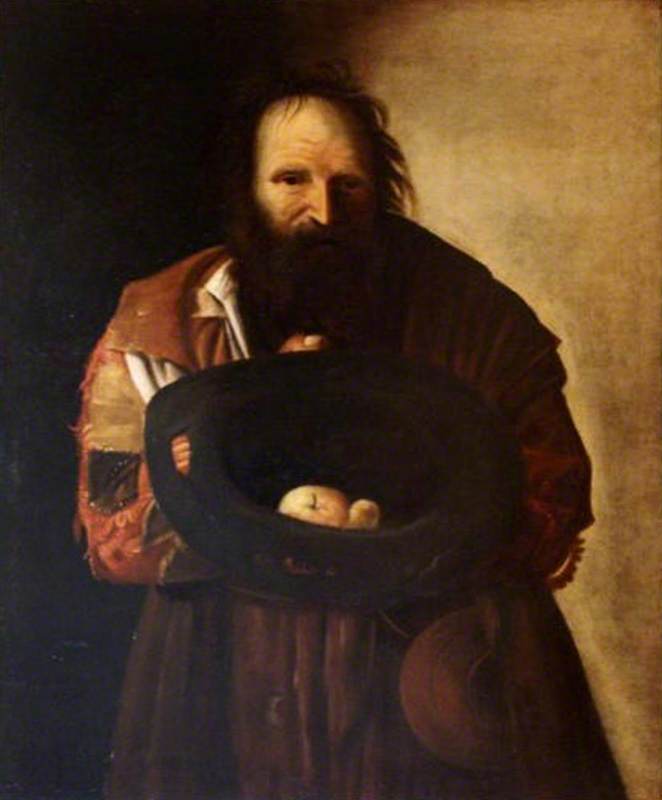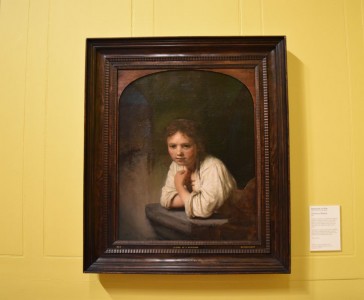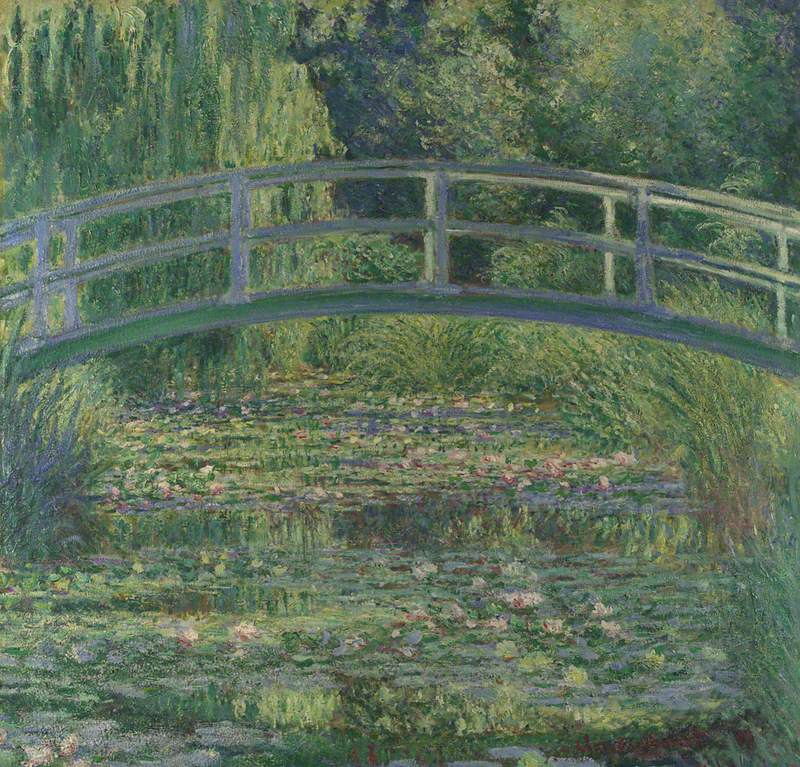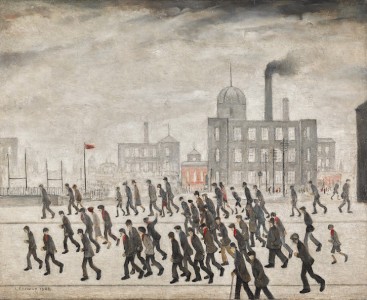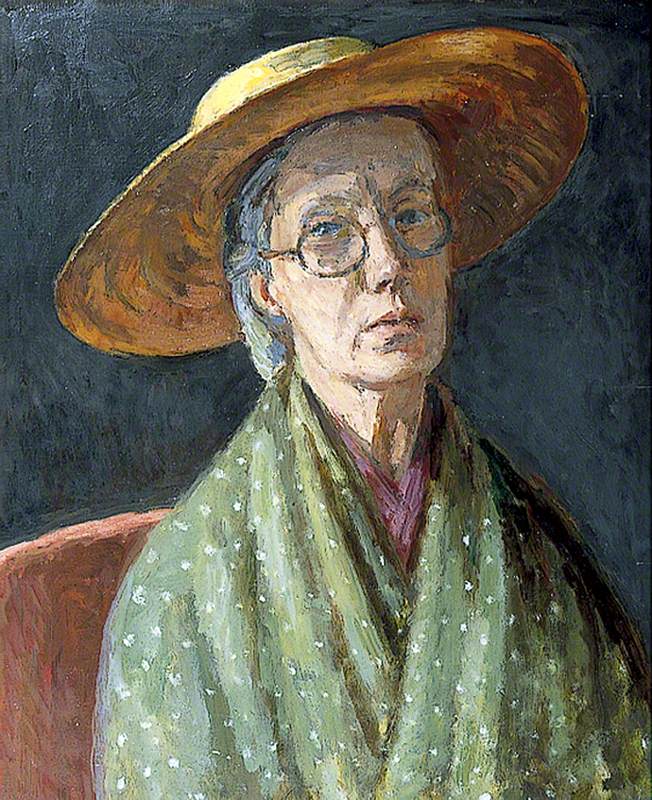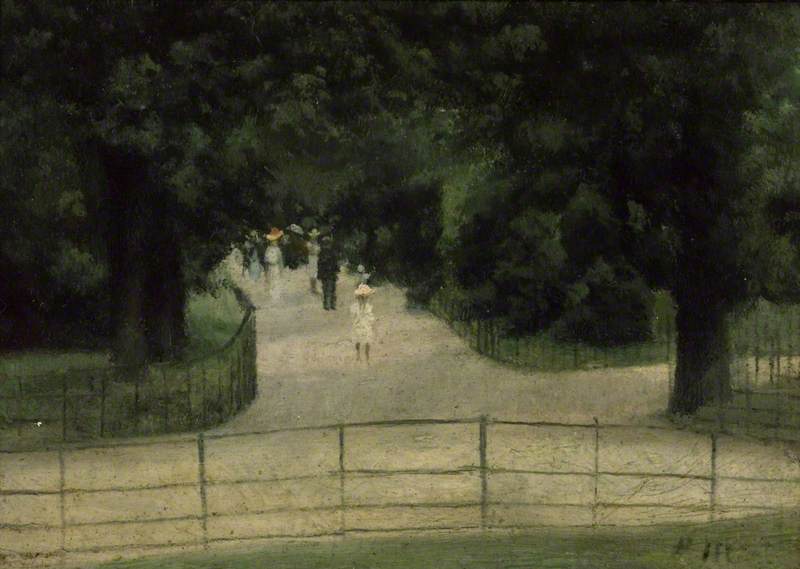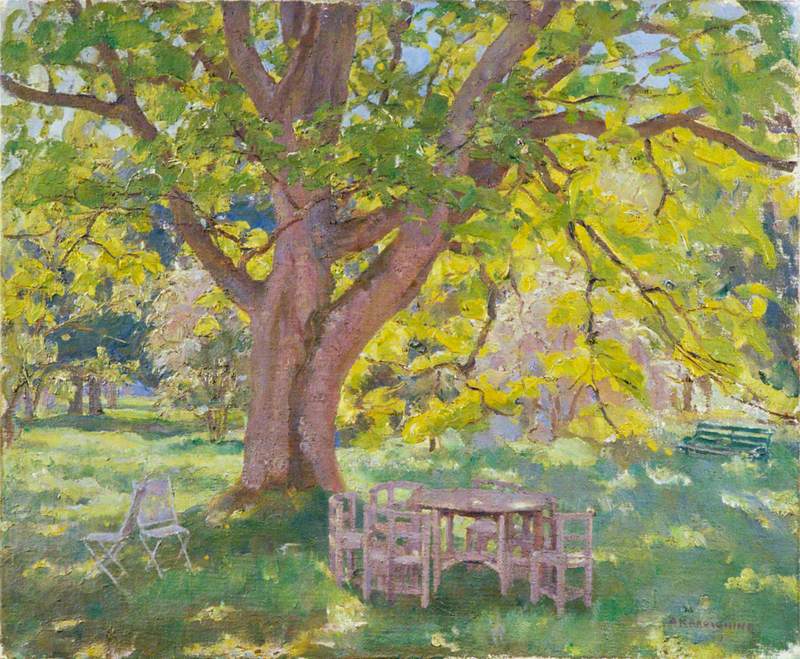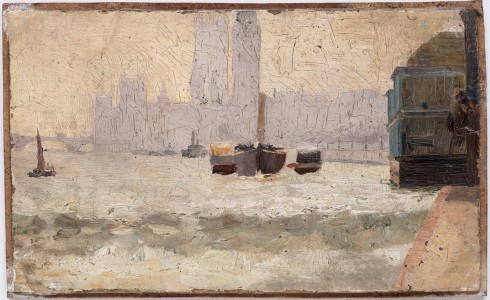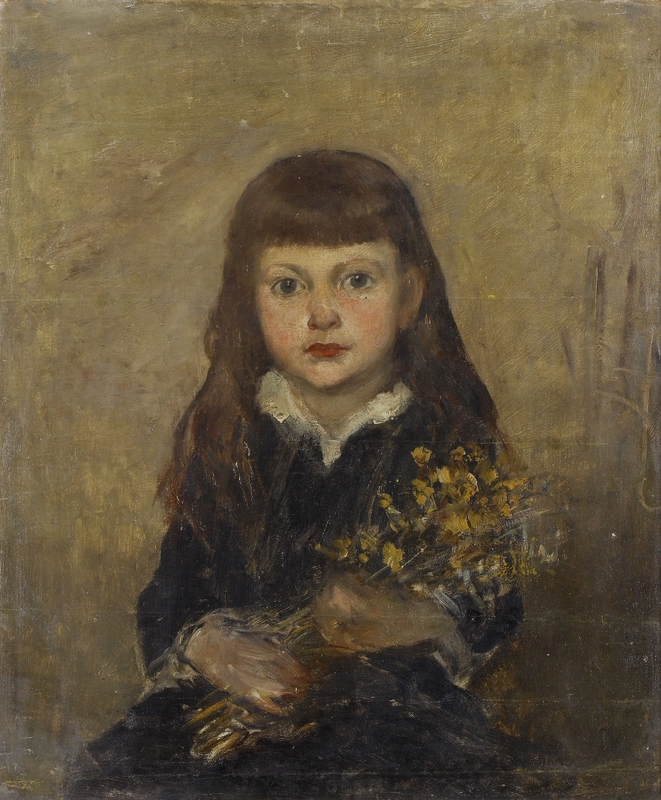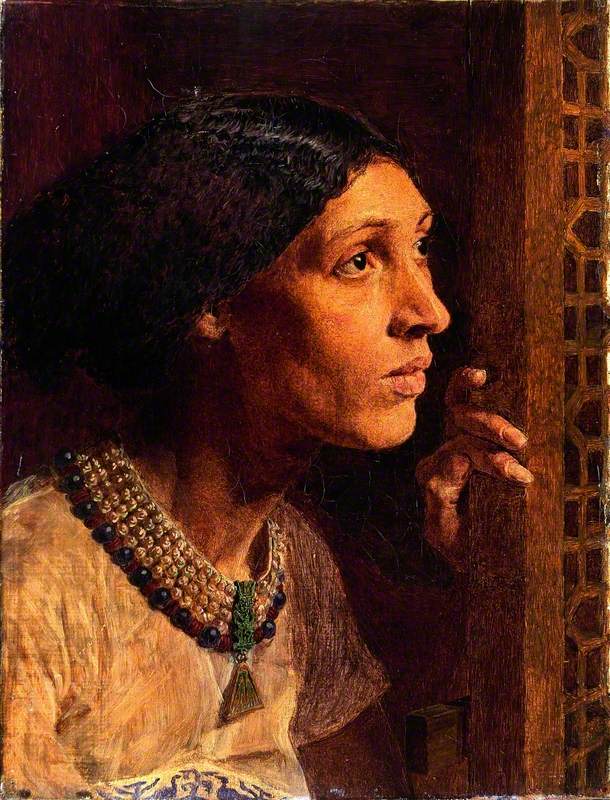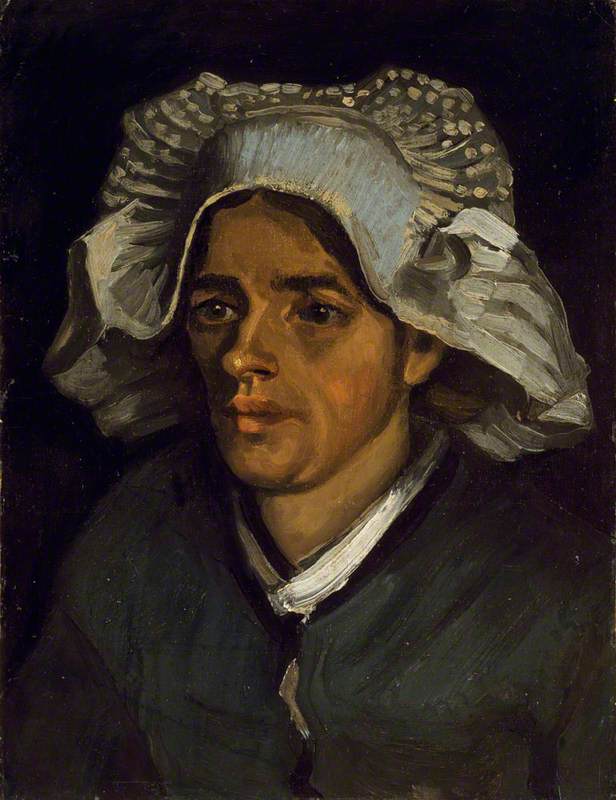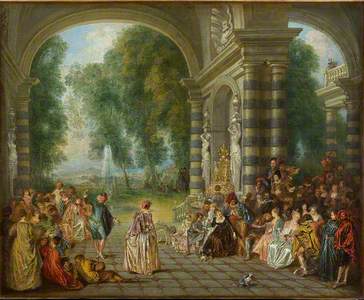The first major UK exhibition celebrating the pioneering Impressionist painter in more than 70 years, 'Berthe Morisot: Shaping Impressionism' is the result of a partnership between Dulwich Picture Gallery and the Musée Marmottan Monet, Paris. The exhibition explores how Berthe Morisot's distinctive contribution to Impressionism was in part shaped by her lifelong engagement with the eighteenth-century art of both England and France.
Two Nymphs, from Apollo, Revealing His Divinity to the Shepherdess Issé (after François Boucher)
1892, painting by Berthe Morisot (1841–1895) 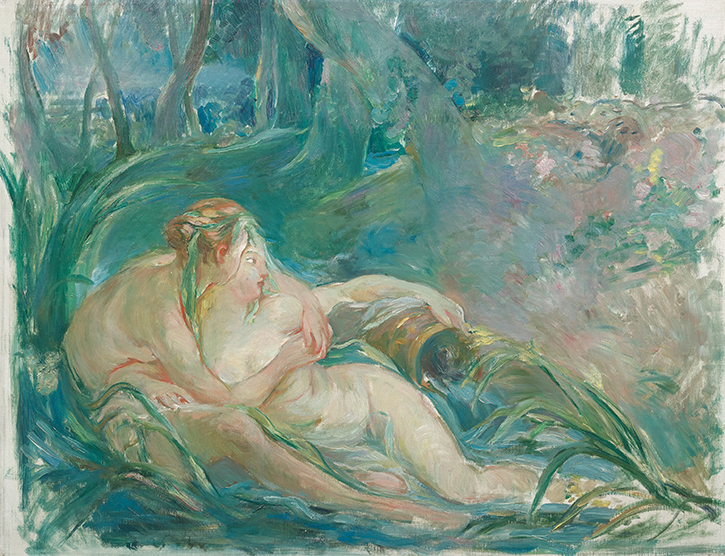
In many respects, Dulwich Picture Gallery is the perfect venue for this exhibition, which brings together more than 40 works from international collections. The paintings on show speak to a key aspect of Berthe Morisot's interest in eighteenth-century English art, and particularly her enthusiasm for the English portraitists Thomas Gainsborough, Joshua Reynolds and George Romney, whose work she first encountered on honeymoon in the UK in 1875.
Self-Portrait
1885, painting by Berthe Morisot (1841–1895) 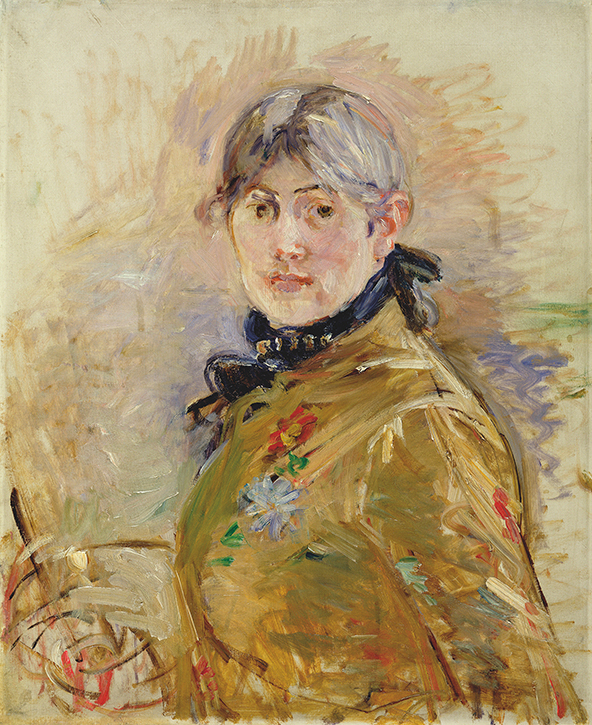
In December 1874, the same year as the first Impressionist exhibition took place in Paris, Morisot married Eugène Manet, brother of Édouard Manet, and the following summer, the couple travelled to England. Morisot had long wanted to visit this country: during childhood, her English governess Louisa had introduced the family to our custom of baking birthday cakes trimmed with candles and instilled in her a precocious taste for English literature.
The Morisot-Manets' itinerary encompassed two of the most highly anticipated events of the English summer season. In late July they spent a day at Goodwood Races, and Morisot wrote to her sister Edma, who had trained as an artist alongside her: 'I was enchanted by my day there, but it was rather costly. […] Never in my life have I seen anything as picturesque as those outdoor luncheons.' They then travelled by steamer to the fashionable Isle of Wight, where their stay coincided with the Royal Yacht Squadron Regatta at the beginning of August.
Eugène Manet on the Isle of Wight
1885, painting by Berthe Morisot (1841–1895) 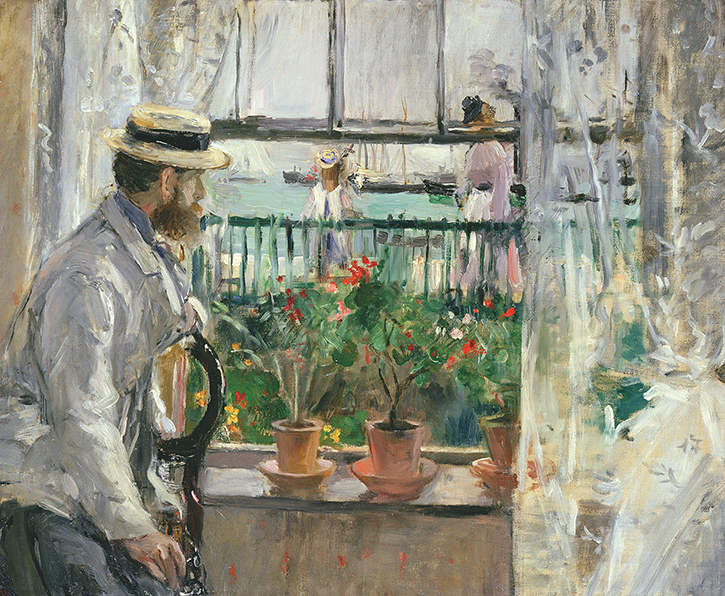
Initially shy about setting up her easel in public, Morisot painted Eugène looking out from the sitting room window of Globe Cottage at West Cowes (right). Binoculars in hand, he gazes across the flower-filled front garden onto the Parade, where a smartly dressed nanny escorts a little girl in pinafore and straw hat, and beyond them to the yachts and steamboat moored at the pier. Eugène twists around on his chair, boater and blazer on, eager to explore. Morisot noted affectionately that he was an impatient model, writing to Edma, who had often modelled for her in the past: 'I began something in the sitting room, of Eugène. The poor man has taken your place. But he is a less obliging model; at once it becomes too much for him.'
Morisot thought she might establish her career in England, like her compatriot James Tissot, who was enjoying huge success as a painter of English high society since relocating to London in 1871 to escape the Franco-Prussian war. His painting of a ball onboard ship was exhibited at the Royal Academy in 1874.
Writing to Edma from the Isle of Wight, she confided: 'It is the prettiest place for painting – if one had any talent. I have already made a start, but it is difficult. People come and go on the jetty, and it is impossible to catch them. It is the same with the boats. There is extraordinary life and movement, but how is one to render it?'
Woman at Her Toilette
1875–1880, painting by Berthe Morisot (1841–1895) 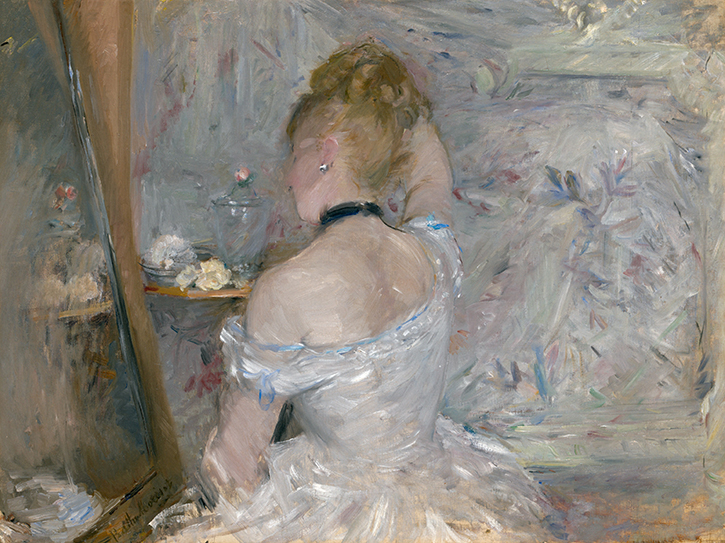
The Morisot-Manets departed the Isle of Wight for London on 18th August 1875, travelling by train. They stayed in the capital for two to three weeks, during which time Morisot visited the major art collections. It was a revelation. She told Edma: 'The things I saw gave me a great desire to become thoroughly acquainted with English painting.' What she encountered inspired a new and lifelong enthusiasm for the art of Gainsborough, Reynolds and Romney.
It is important to note that Morisot was unusual among her Impressionist colleagues in her regard for these three portraitists. Recalling his visits to London collections with Claude Monet, Camille Pissarro told the English painter Wynford Dewhurst: 'The watercolours and paintings of Turner, the Constables and the [John] Cromes certainly had an influence on us. We admired Gainsborough, Lawrence, Reynolds, etc, but we were more struck by the landscapists, who were closer to our own researches into the open air, light and fugitive effects.'
Monet and Pissarro were essentially landscapists, but Morisot's primary subjects were women and children. For her, therefore, English eighteenth-century portraiture had direct professional relevance: not only did Gainsborough, Reynolds and Romney excel in portraying female subjects and children, but they also frequently placed their subjects in natural outdoor settings, just as Morisot did.
We know that Morisot visited The National Gallery and South Kensington Museum, as she writes about both in her letters. The national collection was then split across these two sites; Tate was not yet founded, first opening to the public in 1897. She also saw the Duke of Westminster's magnificent collection of Old Master paintings and British art at Grosvenor House on Park Lane and the equally impressive collection belonging to his cousin, the 3rd Duke of Sutherland, in the palatial surroundings of Stafford House (now Lancaster House) on Pall Mall.
When Edma was planning a trip to England in 1888, Berthe advised her: 'I am enclosing a little note made by Eugène who remembers our peregrinations in London more accurately than I do… Eugène mentions the Marquess of Westminster and Lord Sutherland. I think I visited others, but I don't recall the names.'
At the Ball
1875, painting by Berthe Morisot (1841–1895) 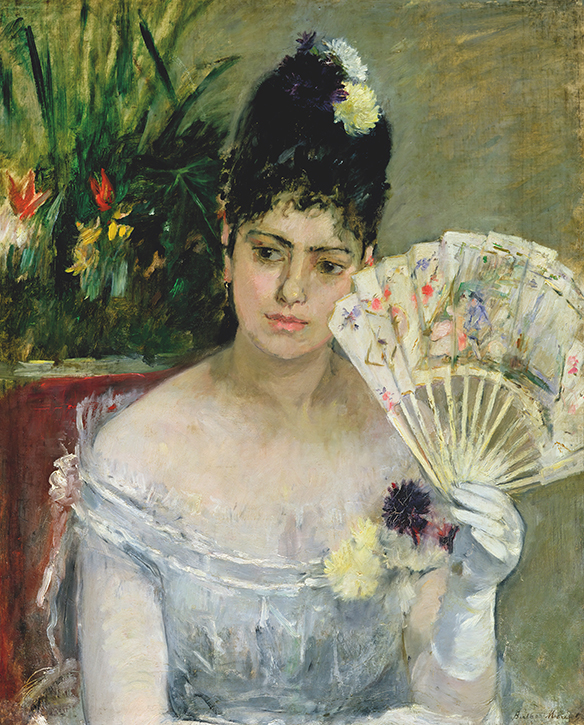
Already by the second Impressionist exhibition of 1876, we see a new departure in Morisot's work that hints at the impact of her English stay. Her exhibits included paintings she had created in England, such as Eugène Manet on the Isle of Wight, as well as the first of a series of elegant half-length female figures, posed by professional models, that sit partway between portrait and genre: At the Ball echoes English eighteenth-century portraiture and fashions, while the young woman holds an eighteenth-century fan displaying a fête galante reminiscent of Watteau or Fragonard, combining Morisot's interests in French and English eighteenth-century art.
Subsequent works, such as Reclining Woman in Grey (1879, private collection), display increasingly free and rapid brushwork, comparable with what Reynolds referred to rather disparagingly as Gainsborough's 'odd scratches and marks'.
Resting
1892, oil on canvas by Berthe Morisot (1841–1895) 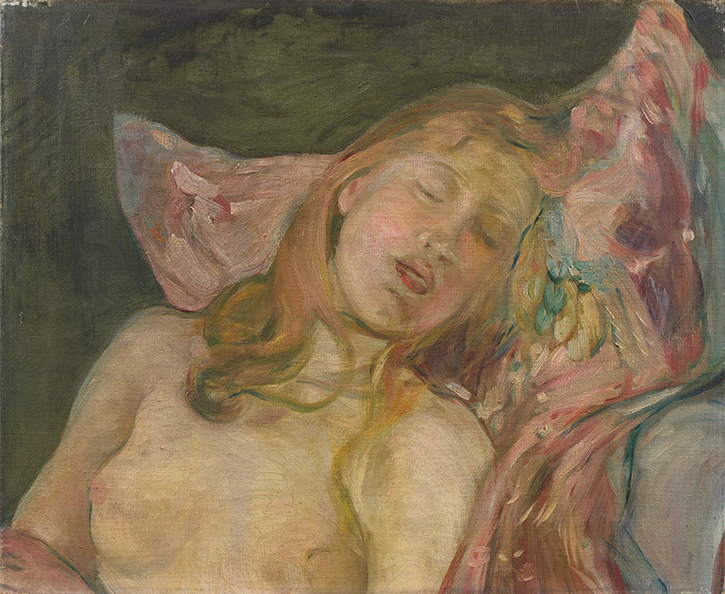
At The National Gallery, Morisot was especially impressed by the art of Reynolds. His most celebrated works in Victorian Britain were the so-called 'fancy pictures' depicting children in appealing guises, such as his unusual portrait of five-year-old Lady Frances Gordon, portrayed as an angel in multiple views. Her debt to Reynolds's work is evident in the golden hair, heart-shaped face and rosebud lips seen in portraits of her daughter Julie.
Julie Manet with her Greyhound Laerte
1893, painting by Berthe Morisot (1841–1895) 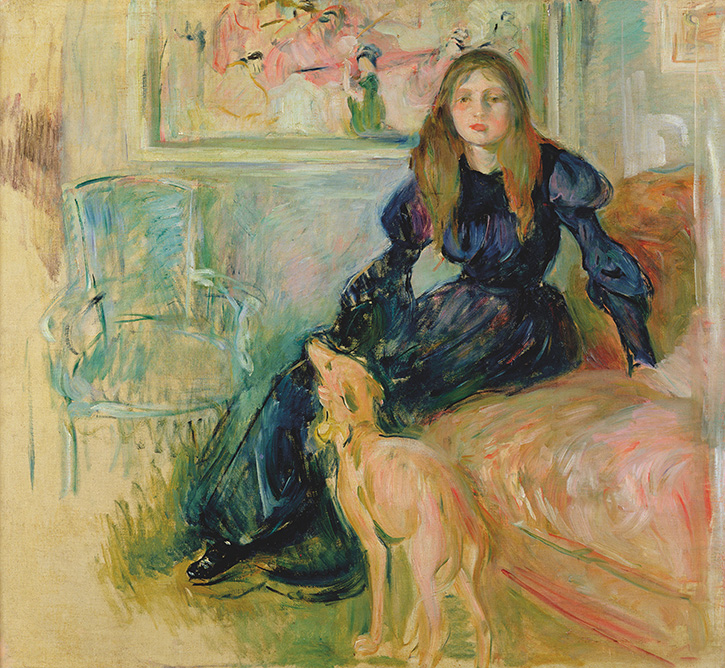
Tantalisingly, we do not know whether Morisot visited Dulwich Picture Gallery in August 1875. We do know, however, that she certainly came within two miles of the Gallery, as she arrived in London with a letter of introduction to the Dean of Westminster Abbey, Dr Arthur Penrhyn Stanley, and visited him near the Crystal Palace. She would surely have known about the collection from her artist friends.
Monet and Pissarro signed the visitor book (in 1870 and 1871 respectively) when they were living in London as refugees during the Franco-Prussian War. The latter had spent the war years nearby in Norwood, painting at least 17 canvases of South London. Tissot too would have been very familiar with the Gallery.
What we know for sure is that Morisot would have loved the Dulwich Picture Gallery collection, rich as it is in eighteenth-century art from both France and England.
Dr Lois Oliver, art historian and curator
'Berthe Morisot: Shaping Impressionism' is on show at Dulwich Picture Gallery until 10th September 2023
This article was originally published in In View, Dulwich Picture Gallery's members' magazine
